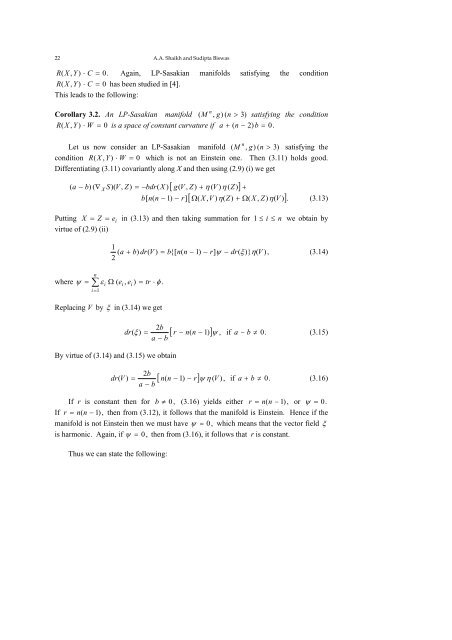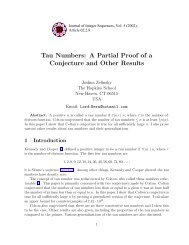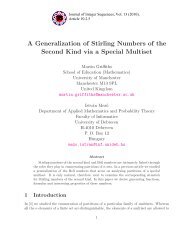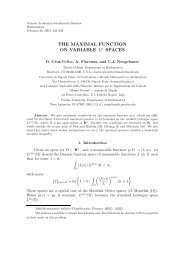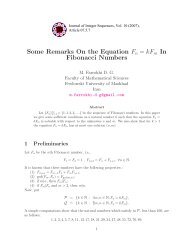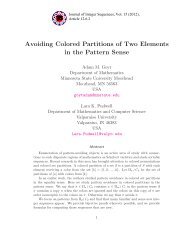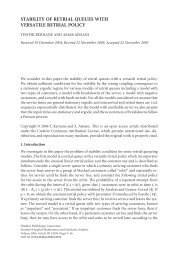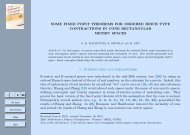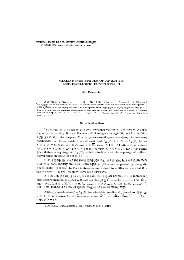On LP-Sasakian Manifolds - Mathematical Sciences
On LP-Sasakian Manifolds - Mathematical Sciences
On LP-Sasakian Manifolds - Mathematical Sciences
You also want an ePaper? Increase the reach of your titles
YUMPU automatically turns print PDFs into web optimized ePapers that Google loves.
22A.A. Shaikh and Sudipta BiswasR ( X , Y ) ⋅ C = 0. Again, <strong>LP</strong>-<strong>Sasakian</strong> manifolds satisfying the conditionR ( X , Y ) ⋅ C = 0 has been studied in [4].This leads to the following:Corollary 3.2. An <strong>LP</strong>-<strong>Sasakian</strong> manifold ( , g)( n > 3)satisfying the conditionR ( X , Y ) ⋅ W = 0 is a space of constant curvature if a + ( n − 2) b = 0.Let us now consider an <strong>LP</strong>-<strong>Sasakian</strong> manifold ( , g)( n > 3)satisfying thecondition R ( X , Y ) ⋅ W = 0 which is not an Einstein one. Then (3.11) holds good.Differentiating (3.11) covariantly along X and then using (2.9) (i) we get( a − b)( ∇ X S)(V , Z)= −bdr(X ) [ g(V , Z)+ η ( V ) η ( Z)]+b[ n(n − 1) − r][ Ω(X , V ) η(Z)+ Ω(X , Z)η(V )].(3.13)Putting X = Z = eiin (3.13) and then taking summation for 1 ≤ i ≤ n we obtain byvirtue of (2.9) (ii)where ψ =n∑ ii = 1M n1( a + b)dr(V ) = b{[n(n − 1) − r]ψ − dr(ξ )} η(V ),(3.14)2ε Ω ( e , e ) = tr ⋅ φ .Replacing V by ξ in (3.14) we getBy virtue of (3.14) and (3.15) we obtainiiM n2bdr ( ξ ) = [ r − n(n − 1) ] ψ , if a − b ≠ 0.(3.15)a − b2bdr( V ) = [ n(n − 1) − r] ψ η ( V ),if a + b ≠ 0.(3.16)a − bIf r is constant then for b ≠ 0,(3.16) yields either r = n( n − 1) , or ψ = 0.If r = n( n − 1) , then from (3.12), it follows that the manifold is Einstein. Hence if themanifold is not Einstein then we must have ψ = 0,which means that the vector field ξis harmonic. Again, if ψ = 0,then from (3.16), it follows that r is constant.Thus we can state the following:


